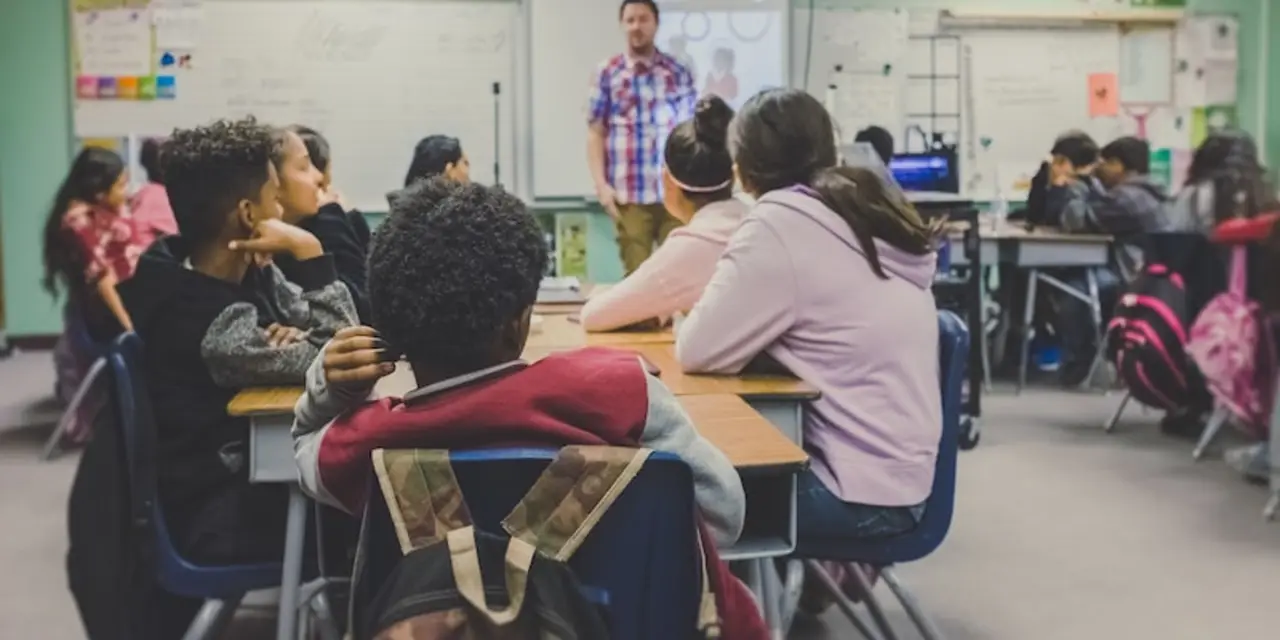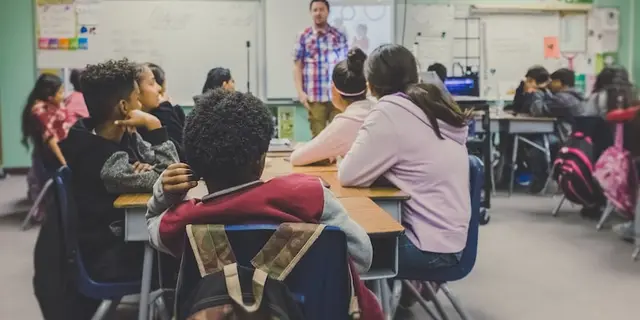The Impact of Education on Social Stratification
Education is a powerful tool with the power to shape lives and communities. As such, it can be used to create and reinforce social stratification, a system of social inequality based on socioeconomic statuses. This article will discuss the ways in which education can have a negative impact on social stratification.
Unequal Access to Education
Unequal access to education is one of the most powerful ways in which education can have an adverse effect on social stratification. In many countries, education is not equally available to all members of society, meaning that those from lower social classes are often denied access to educational opportunities. This can result in a further entrenchment of inequality in society, as those from higher social classes are able to take advantage of educational opportunities and move up the social ladder, while those from lower classes are not able to do so.
Tendency to Reproduce Inequality
The unequal access to education can also lead to a tendency for existing inequality to be reproduced. Those who are able to access higher levels of education are more likely to benefit from better job opportunities, higher salaries, and greater social prestige. This can result in a cycle of inequality, as those from higher classes are able to take advantage of the benefits of education and further entrench their positions in society.
Increased Competition
Education can also lead to increased competition in society, as those from lower social classes are forced to compete for resources and opportunities with those from higher classes. This can result in increased levels of social inequality, as those from lower classes are often unable to compete with those from higher classes and are unable to take advantage of the resources and opportunities available to them.
Unequal Access to Resources
The unequal access to resources is another way in which education can have a negative impact on social stratification. Those from lower classes are often denied access to the resources and opportunities available to those from higher classes, which can lead to further entrenchment of inequality. This can result in a system of inequality in which those from lower classes are unable to take advantage of the educational opportunities available to them and are therefore unable to move up the social ladder.
Conclusion
Education can have a significant impact on social stratification. Unequal access to education, the tendency for existing inequality to be reproduced, increased competition, and unequal access to resources can all contribute to the entrenchment of inequality in society. As such, it is important to ensure that all members of society have equal access to educational opportunities in order to reduce social inequality.
Exploring the Link Between Education and Mental Health
Education is an essential element of a functioning society. It shapes our opinions, our beliefs, and our values, and it can have a profound impact on our mental health. As educational systems become more competitive, students often find themselves in difficult situations, both in and out of the classroom. It is important to understand the link between education and mental health so that we can ensure the well-being of our students.
One of the most common negative effects of education on mental health is the stress of academic competition. Students often feel the need to perform well in order to earn good grades, which can lead to anxiety and depression. This can be compounded by the pressure of expectations from parents and teachers. This can lead to a feeling of being overwhelmed and can create a sense of helplessness.
Social media can also be a source of stress for students. Constant comparison to peers and celebrities on platforms like Instagram and Facebook can lead to feelings of inadequacy and low self-esteem. This can lead to mental health issues such as depression and anxiety.
In addition to the stress of competition, educational systems can also lead to the development of unhealthy habits. Long hours spent studying or in the library can lead to sleep deprivation, which can have a negative impact on mental health. This can be compounded by a lack of physical activity, as students may not have time for regular exercise.
Finally, education can also lead to a lack of social interaction. Students may feel isolated and lonely, which can have a negative impact on their mental health. This can be especially true for those in college or university, who have limited contact with friends and family.
It is important to recognize the link between education and mental health, and to take steps to ensure the well-being of our students. Education should be seen as an opportunity to develop knowledge, skills, and values, rather than as a competition. Schools, colleges, and universities should strive to create a supportive environment where students can feel safe and secure. This will enable them to gain the most from their educational experience, while also protecting their mental health.
The Negative Effects of Unregulated Education Systems
One of the most pressing issues facing our society today is the lack of quality education for many people. Unregulated education systems can lead to a variety of negative effects, from decreased academic performance to increased inequality in society. Let's take a look at some of the most common negative effects of unregulated education systems.
Decreased Academic Performance
Unregulated education systems can cause a decrease in academic performance, especially in disadvantaged communities. In these communities, students may not have access to the same resources, such as textbooks and technology, as those in more affluent areas. This can lead to a lack of understanding and difficulty learning the material, resulting in lower grades and a decrease in academic achievement.
Increased Inequality in Society
When education is not regulated, it can lead to increased inequality in society. This is because those with access to better resources, such as private schools, have an advantage over those who don't have access. This can lead to a gap in opportunity and wealth between different groups in society, creating higher levels of poverty and social exclusion.
Reduced Opportunities for Advancement
Unregulated education systems can also reduce opportunities for advancement and success. Without access to the same resources, it can be difficult for disadvantaged students to gain the same education level as their more privileged peers. This can lead to reduced opportunities for higher-paying jobs and other forms of advancement.
Risk of Exploitation
Finally, unregulated education systems can also lead to a risk of exploitation. Without proper oversight and regulation, unscrupulous individuals may take advantage of students and their families. This can include charging excessive fees or providing substandard education services, leading to further inequality and a lack of opportunity.
The negative effects of unregulated education systems are far-reaching and can have a detrimental impact on society. It's important to ensure that all students have access to quality education and resources, in order to promote fairness and opportunity for everyone.
Examining the Negative Effects of Education on Economic Inequality
Education has always been seen as one of the most important factors in economic development and growth. However, there are many ways in which education can also have a negative effect on economic inequality. This article will examine the negative effects of education on economic inequality and how these can be addressed.
Socioeconomic Disparities
The most obvious negative effect of education on economic inequality is the widening gap between socioeconomic classes. Education is often seen as a way to bridge the gap between different social classes, but when opportunities for education are not evenly distributed, it can end up exacerbating existing disparities. The cost of tuition and other related expenses for higher education, for example, can be prohibitively expensive for many families, leaving only those with the most financial resources able to access higher education institutions.
Unequal Access to Quality Education
Unequal access to quality education is another way in which education can negatively impact economic inequality. Many public schools in economically disadvantaged areas lack the resources and quality of education that is available in more affluent areas. This means that students in these areas are not able to access the same level of education and that they may be at a disadvantage when it comes to competing for jobs and other opportunities. This can lead to a cycle of poverty and economic inequality that is difficult to break.
Racial Discrimination
Racial discrimination is also a factor in economic inequality. Historically, individuals from minority groups have faced discrimination in the educational system, which can lead to a lack of access to quality education and resources. This can lead to disparities in educational attainment, which can in turn lead to economic inequality. It is important that educational systems address these issues and ensure that all students have the same access to quality educational opportunities.
Inequality in Educational Opportunities
Inequality in educational opportunities can also have a negative effect on economic inequality. This can include unequal access to resources, such as libraries and technology, and unequal access to quality teachers. These disparities can lead to a lack of student success and can perpetuate economic inequality.
Solution
The only way to address the negative effects of education on economic inequality is to ensure that all students have access to quality education. This means ensuring that there are equal resources and opportunities available to all students, regardless of their socioeconomic status or race. Additionally, it is important to ensure that teachers are given the resources and support they need to provide quality instruction and support for their students. Only then can we begin to bridge the gap between socioeconomic classes and ensure that all students have access to the same educational opportunities.











